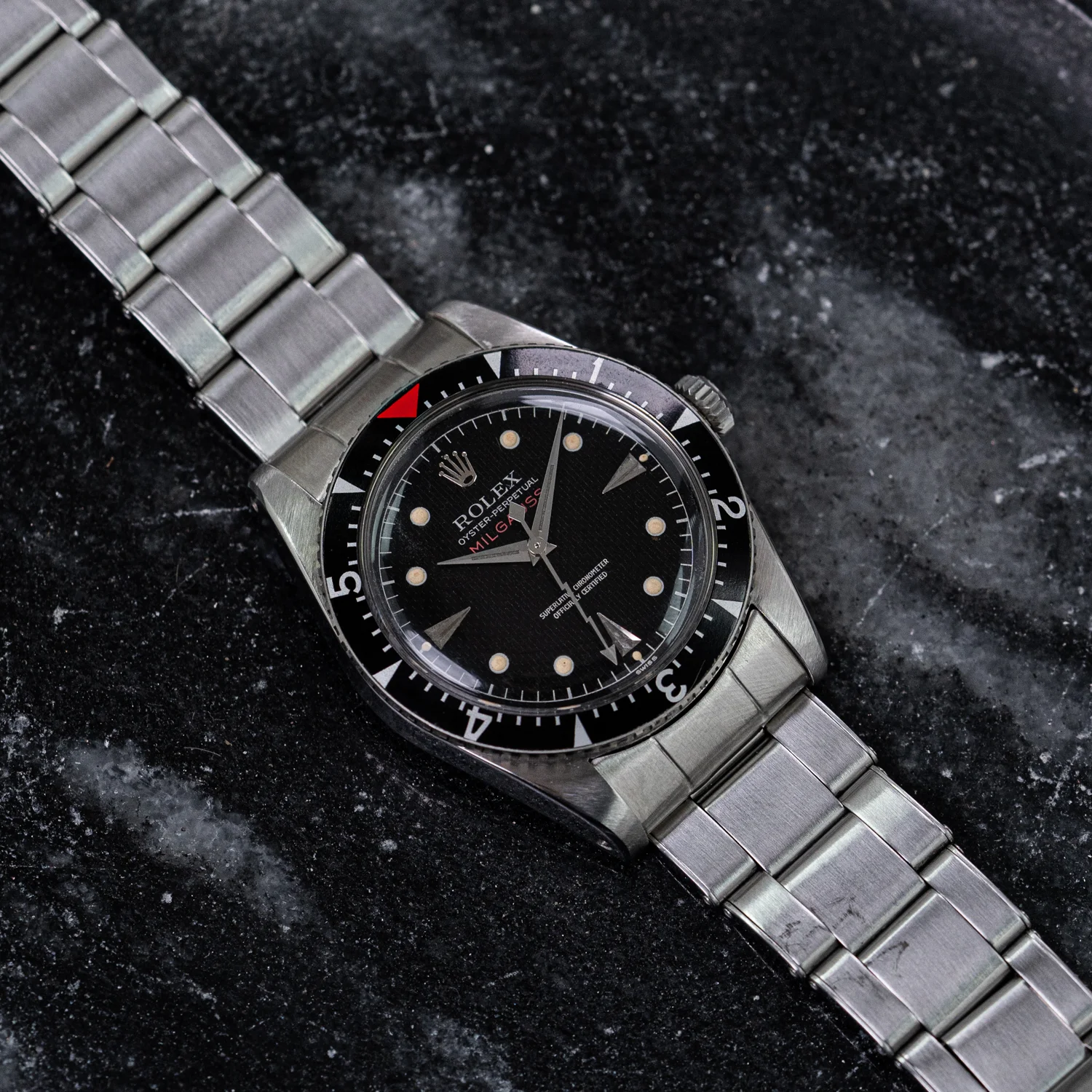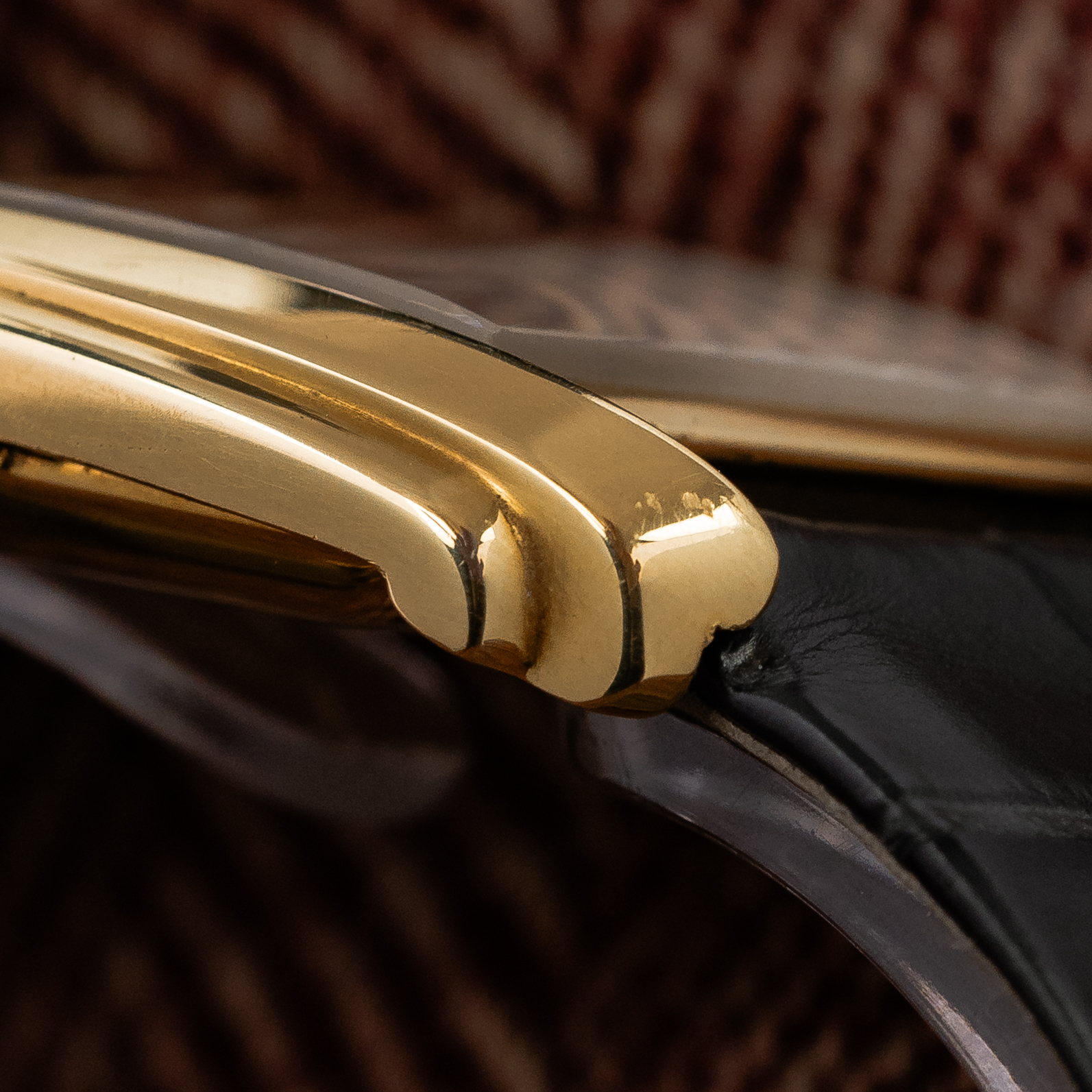

Silver dial with 'Gübelin' signature, original Patek Philippe
Gübelin extract and Patek Philippe extract from the archives
3424
“If you want to succeed, do what others will not do”. Was the advice Gilbert Albert got from his tutor. To say he listened, is obvious.
In 1930, Gilbert Albert was born in Geneva and had a deep love for nature and its impact on design. His father fostered a passion for this love and also encouraged the exploration of entomology, which would later inform much of his work. His remarkable talent was acknowledged from an early age, and he began his studies at the l’Ecole des Arts Industriels in Geneva when he was 15 years old. He was able to explore design in its entirety and develop a love for modern sculpture, as well as a fondness for artists like Brancusi and Mondrian.
Gilbert Albert radically changed the way Patek Philippe and other businesses approached watch design. A watch case was now asymmetrical and triangular rather than circular or rectangular. Even the pocket watch underwent a transformation, with designs like "Ricochet" firmly placing this old statesman in the era of the Swing Sixties. Henri Stern's risk paid off quickly, as by 1960 Patek Philippe had achieved the Grand Slam of the most prestigious accolades in the field of watch design: the Diamonds International Award, which Patek Philippe had won for three years running (starting in 1958). Later on, Gilbert Albert would become the first person to win the 'Oscar in the field of design' ten times in history.
The ref. 3424 “Rhomboid 3” is regarded as the classic of all the rhomboid-inspired designs, and from its sensational launch at the Basel Fair in 1959, it still continues to attract attention. The bracelet and diamond versions refs. 3424-1 and 3424-2 are only known in a couple of examples of each configuration in platinum, 18K yellow and rose gold. The other three asymmetrical references 3412, 3413 and 3422 were produced in significantly lower quantities than the ref. 3424. This was in part because their avant-garde designs were not instantly a commercial success and were primarily made to order.
This beautiful specimen is from 1962 and runs on the manual wound cal. 8"85. The case -made by Markowski- is in very crisp condition, which is paramount for "Forma Watches". The silver dial has a Gübelin signature just above the 6 o'clock marker and still displays perfect printing and a surface without blemishes. This artwork comes with an Extract from the Patek Philippe Archives and an additional extract from Gübelin. It is delivered on a fresh croc strap and original buckle.

















